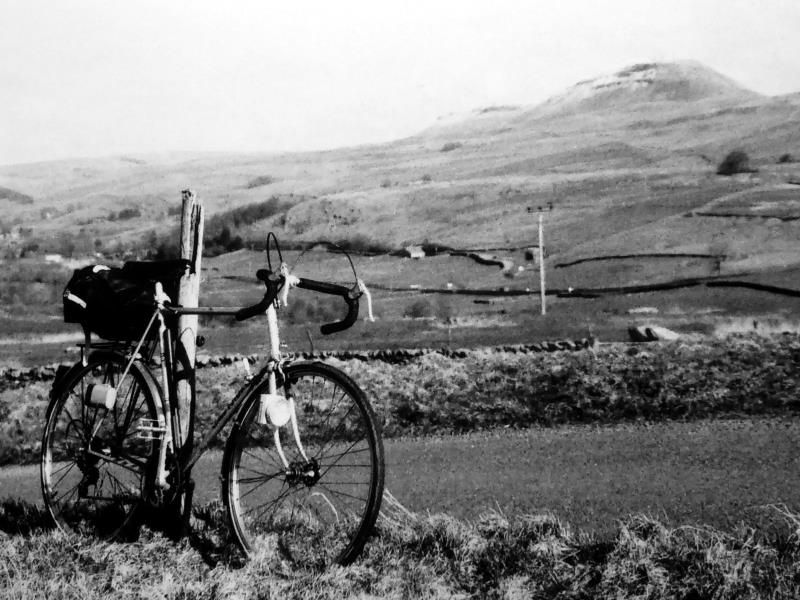I’m doing the Way of the Roses 1970s-style: the 170 mile coast-to-coast east across northern England, from Morecambe to Bridlington, on a 1978* bike and using only seventies kit. No gadgets, no lycra. A rain cape, not Goretex jacket. Terrible old Ever Ready lights, not LEDs. Fixing accommodation on the hoof, in a callbox or by word of mouth. A 35mm SLR shooting black and white film. Cash only; no cards. In short, nothing which was unavailable to my native East Yorkshire public in 1978: no internet, email, mobile phones, GPS, cleats, Channel 4, real ale, avocados or banoffee pie.
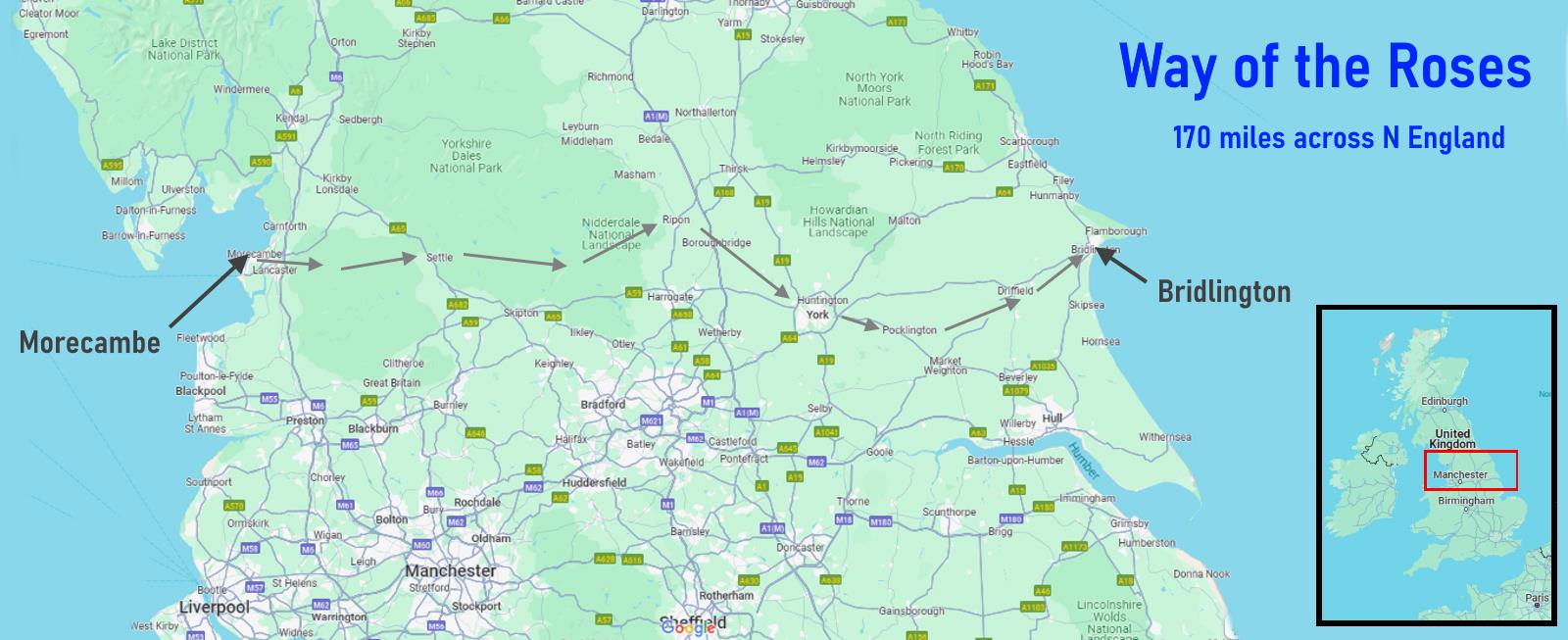
The black and white images in the blog of this trip were taken with that old camera, a Pentax K1000. Colour images were taken with my digital compact camera, which I also had with me.

(I was slightly lying about the gadgets. After all, this is for a magazine article, ie paid work, so obviously I wanted some decent pictures of the trip.)
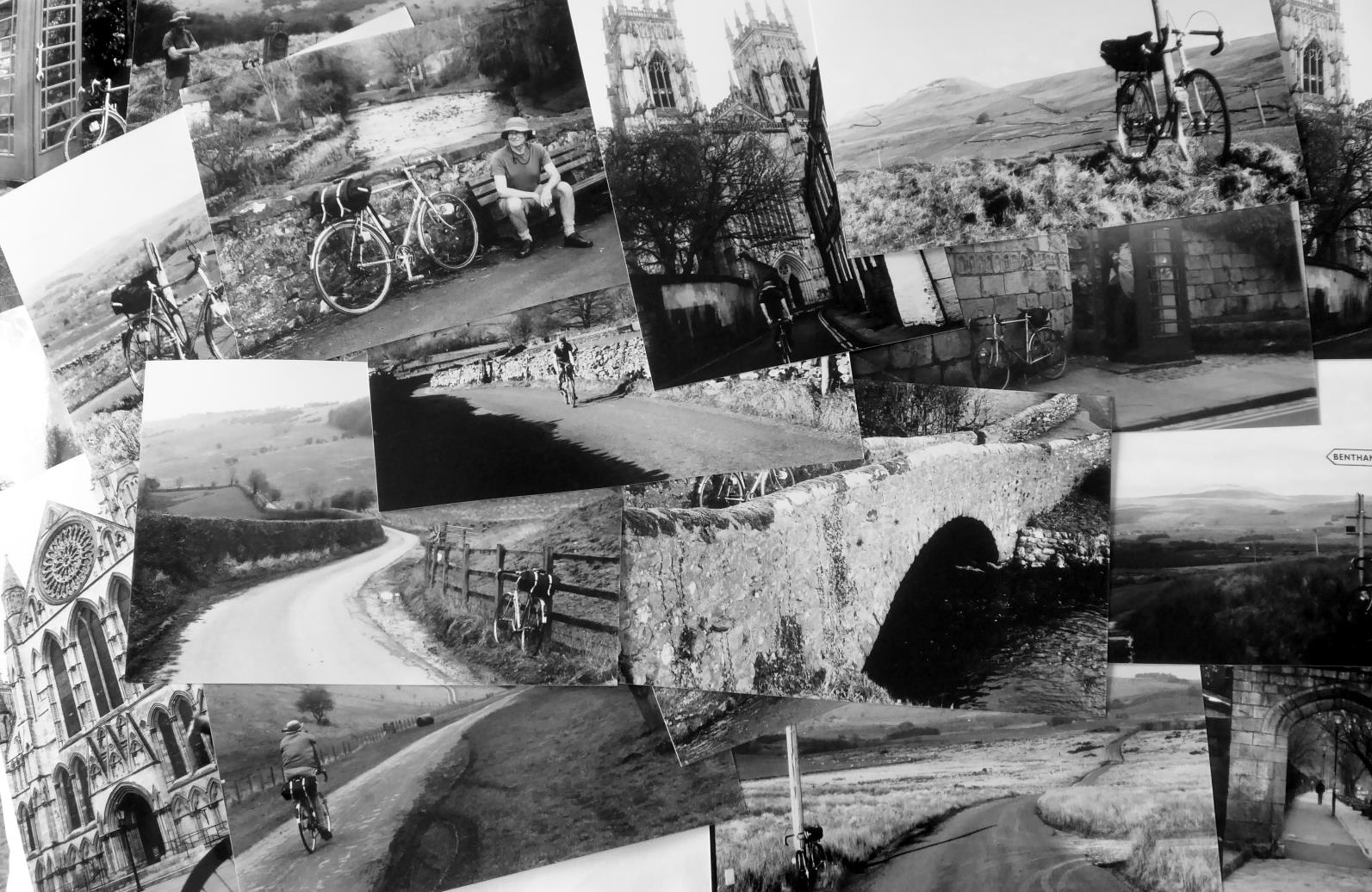
The bike is my 1978 Claud Butler Jubilee, from Resurrection Bikes of Harrogate, a bike-recycling charity. It cost £150, roughly the same figure it commanded new in 1978: a sum then equivalent to about £1200–£1400 now.

It was pretty high-spec for the time, a whippy racing bike slightly adapted for fast touring: Reynolds 531, Weinmann centre pulls, Brooks B17, quick releases, large flanges, and other keywords that have vintage bike buffs nodding in approval.
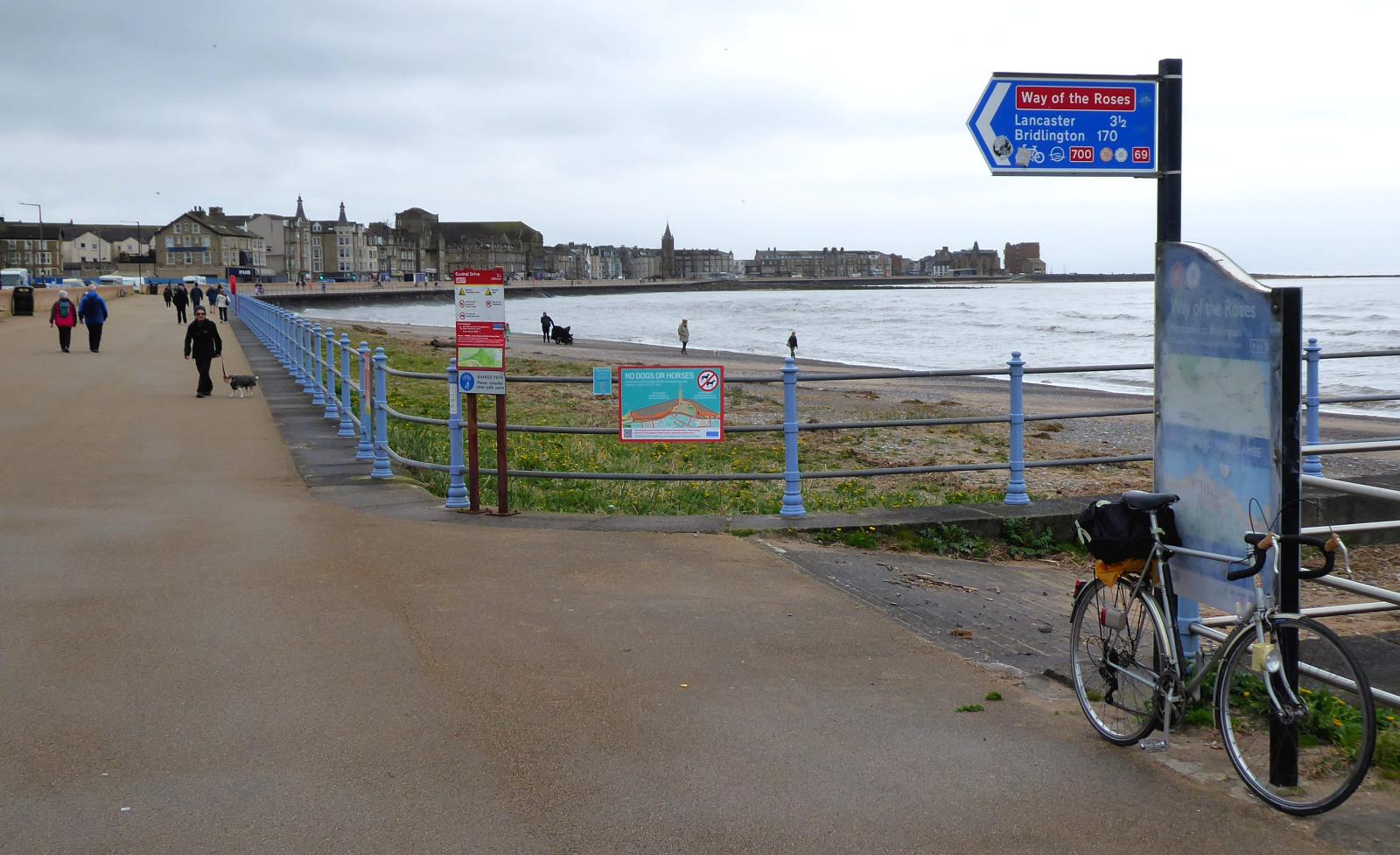
It was in very good nick when I got it, mostly original, including the ‘de luxe’ rack it came with that looks very flimsy to modern eyes. A few things had been changed at some point, which I was quite happy about: a triple chainset rather than original double, extending the gears; puncture-resistant tyres.
Thanks to Carradice, the venerable trad-luggage meisters of Nelson in Lancashire, I had a Camper Longflap saddlebag. Its strappy, expandable black cotton spaces easily accommodated my gear for a four-day trip – raincape, camera, zoom lens, pork pie and all. I was surprised to feel that the weight, supported by the saddle not the back wheel, was almost unnoticeable: the bike handled springy and light.
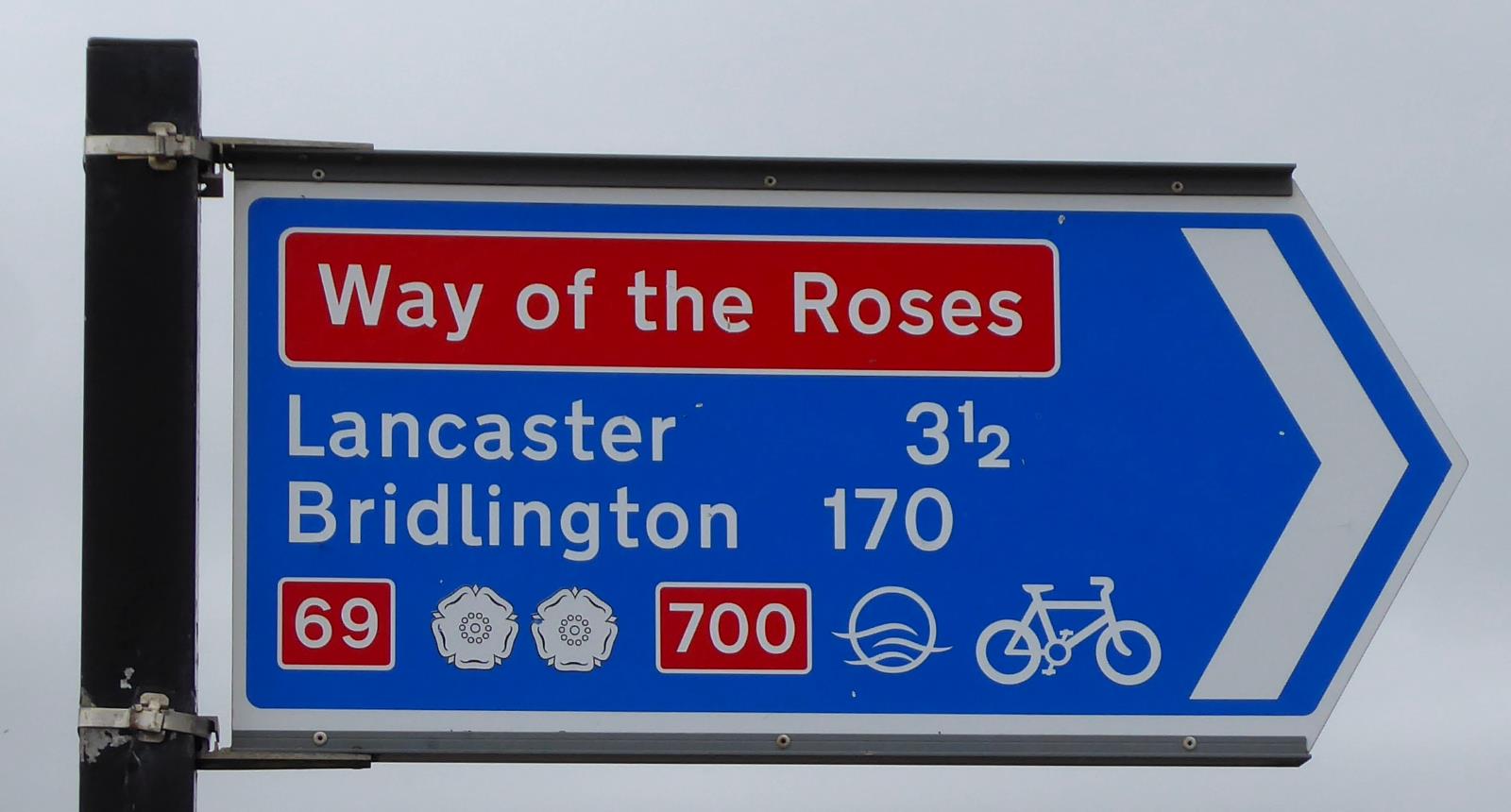
Just as well, with a bottom gear of 28×28, compared to my regular tourer’s 24×36: no wonder it felt 50% harder to pedal uphill.
Anyway, I got to Morecambe on a stupid-early train from Hull. The guard’s vans for bikes I remember from my first tours in the 1970s are now only encountered on heritage railways (such as the North York Moors Railway) but the Transpennine service I took to Leeds accepted unbooked bikes into its cycle area with a smile. From Leeds to Morecambe, being a Northern service, it was no problem: Northern trains all take walk-on bikes.
So far, so 1970s, so good; I could even buy tickets cash on the train. And even better, bikes go free now: back then they were half the price of a person, I’m told.

Morecambe was grey and cold. I was so keen to warm up and get going that I forgot to visit the statue of that icon of 1970s humour, Eric Morecambe, though I’ve been several times before. Such as when I did the Way of the Roses in 2010, just before it had officially opened. There’s been a lot of water under the bridge since then, which is climate change for you.
I followed the smooth tarmac railtrail through Lancaster – stopping off briefly at the castle – and out along the Lune to the viewpoint at Crook o’Lune. Last time I was here I was wild swimming. Not today.
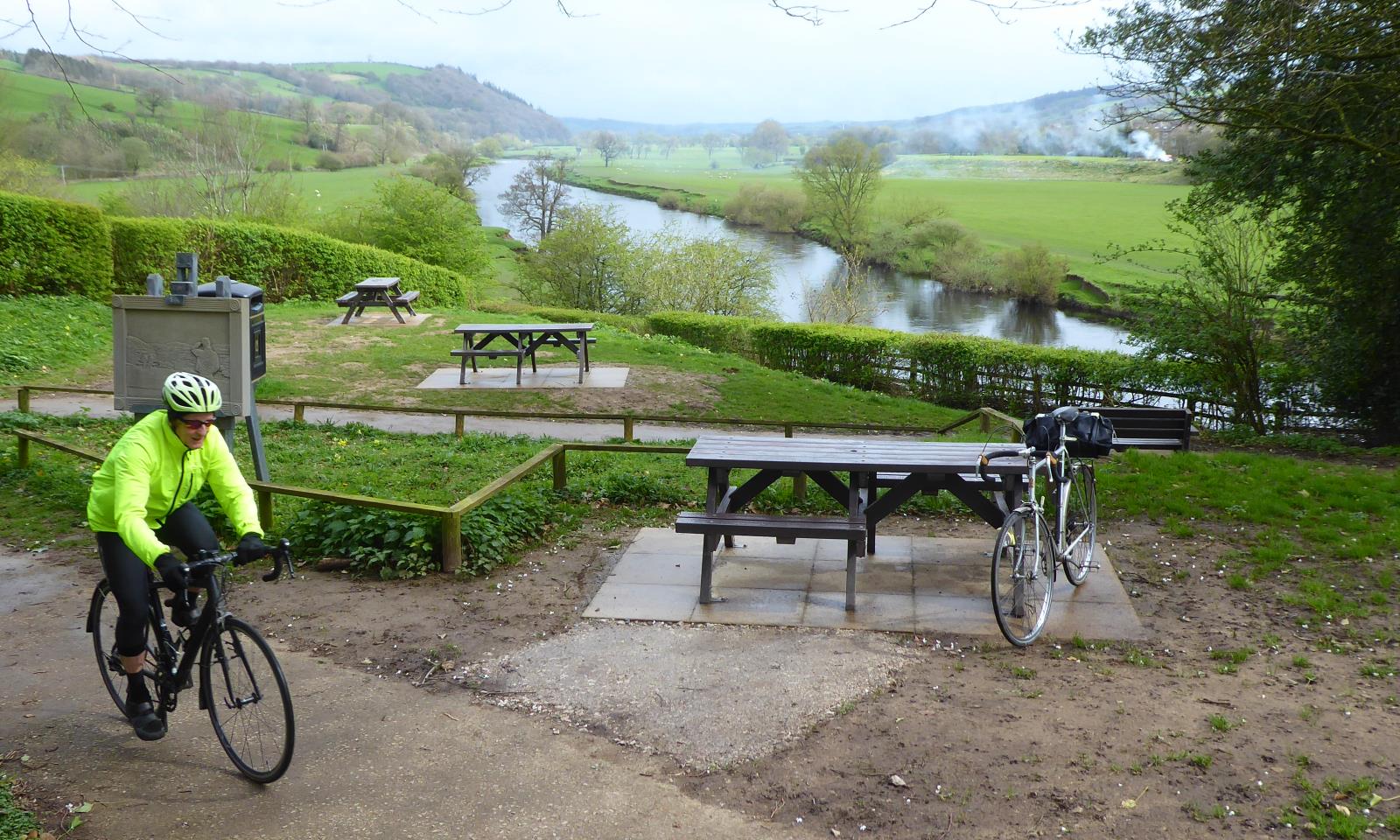
Just beyond, coming into Gressingham, came the first challenge: a road closure, with no alternative route signposted. (Slapped wrists Sustrans and the local council.) The guy at the roadworks was adamant I could not get through. He also seemed to think my Claud Butler was an Audi and my wristwatch was an Apple running Google Maps, because he told me I should divert by following busy A roads to Kirkby Lonsdale. Even if you have little idea where that is, you can see it’s clearly too far.
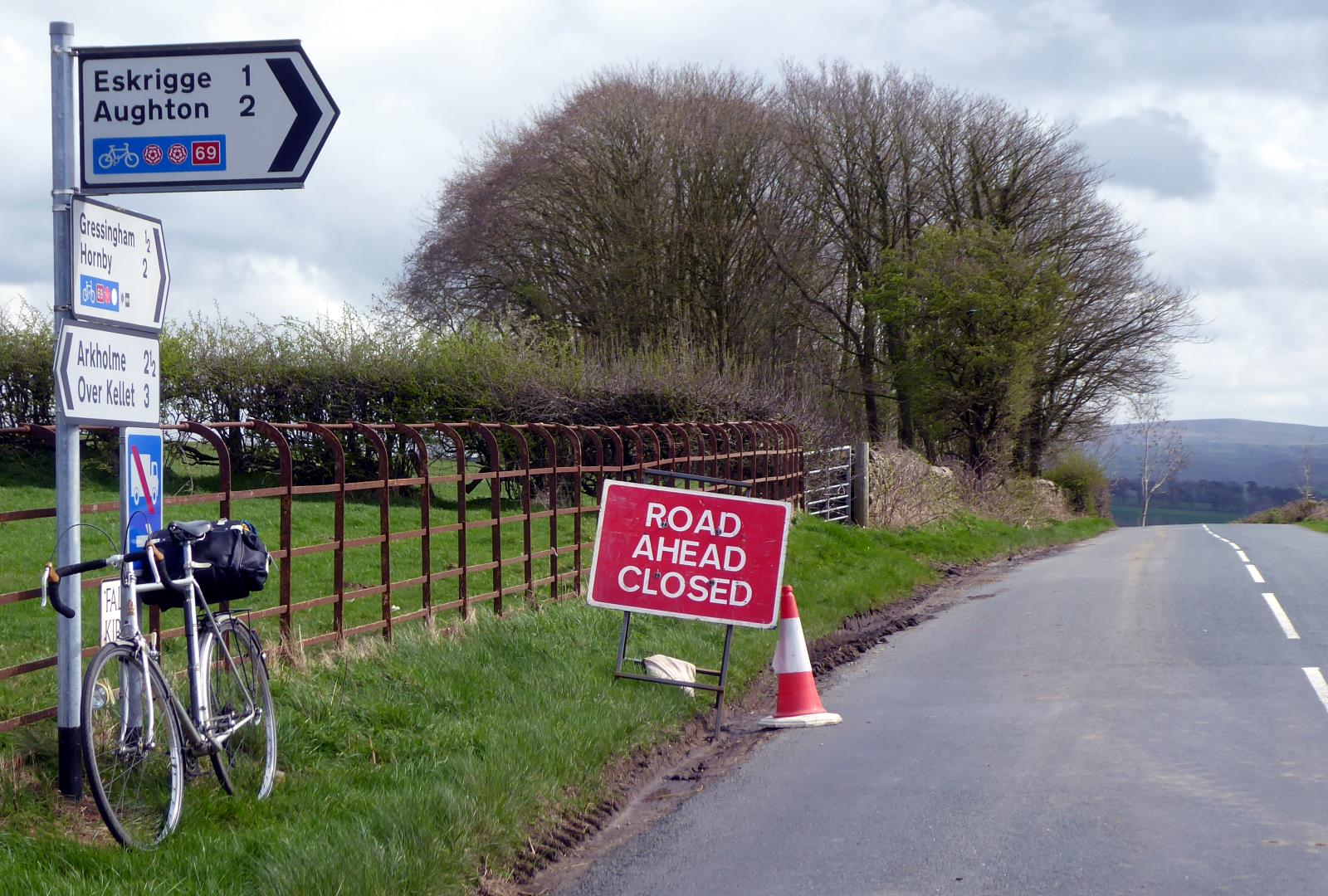
So I looked at my period maps – Bartholomews, recommended by veteran cycling chums as the cartography of the age, used by cyclists because of their scale ideal for day rides.
Unfortunately it was a non-ideal scale for finding an alternative route, showing no other bridges for dozens of miles. Only a ferry, which seemed unlikely to be around nowadays. If they couldn’t make Hull to Zeebrugge across the North Sea viable, a village-to-village crossing of the Lune had no chance.
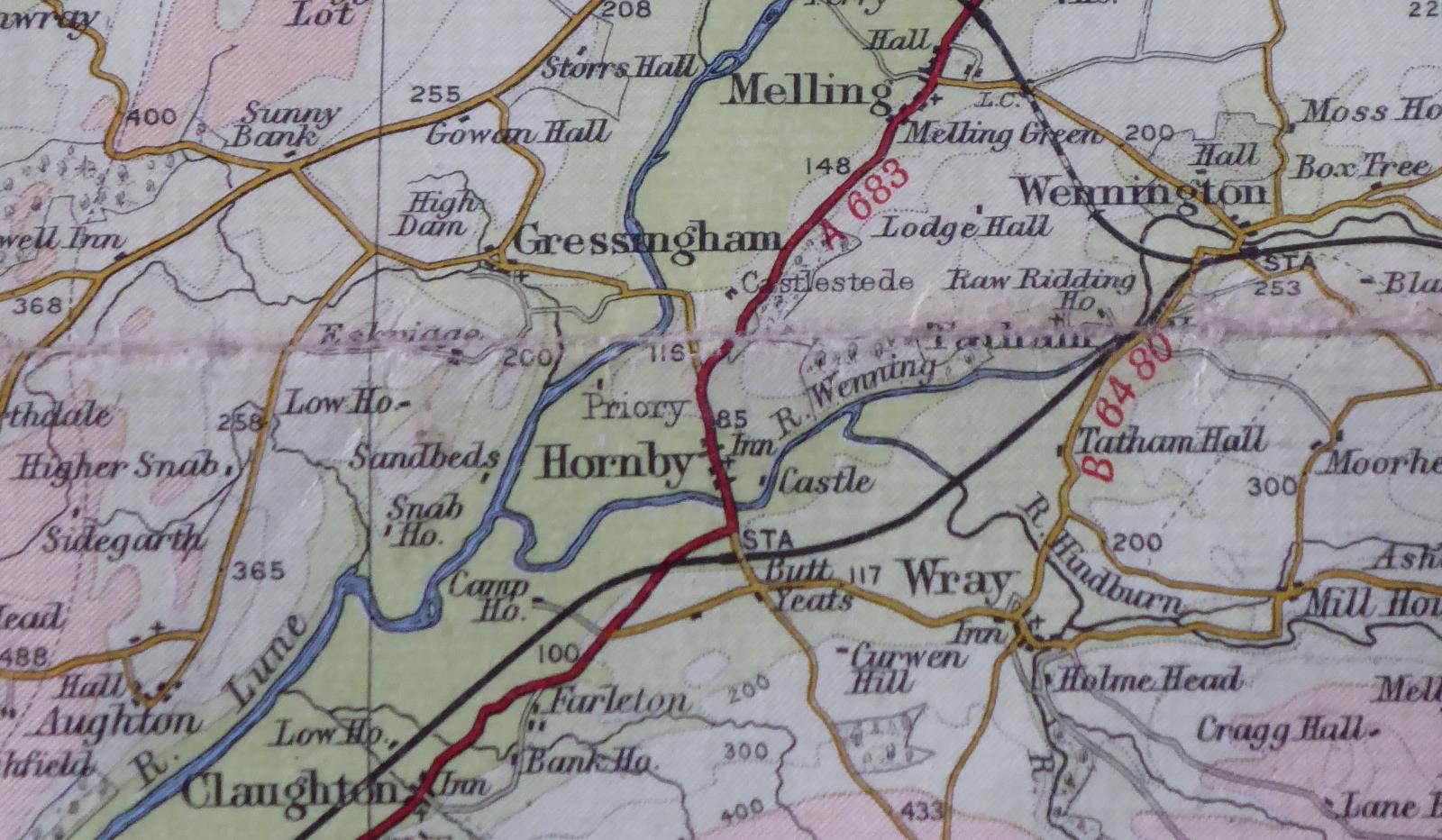
But, aha! I was rescued by a local cyclist out for a spin on his self-built gravel bike: like me, a man the same age as old people. He was softly and precisely spoken, with a smart sense of humour; the closure came as a surprise to him too, but he knew a sneaky back-lane way round through a few farms. It was a diversion full of atmosphere, one consisting mainly of methane and ammonia.
Safely back on the route, we stopped at Hornby village for a snack from the village shop. I scoffed a pork pie and swigged fizzy pop, we swopped stories and jokes, and did a little birdspotting. It was all very traditional and pleasant.

Yorkshire arrives sooner than many might expect: the grand county extends to within eight miles of the Irish Sea (as well as stretching as far north as southern Scotland, and as far south as north Wales). But Mewith Lane, the little country road threading between the Yorkshire Dales and the Forest of Bowland, seemed to go on for quite a long time. Eventually I arrived at Keasden’s crossroads, with Ingleborough looming to the north, and turned left to the picturesque village of Clapham. I kept an eye open for people riding a bus in case they could inform me as to national opinion.
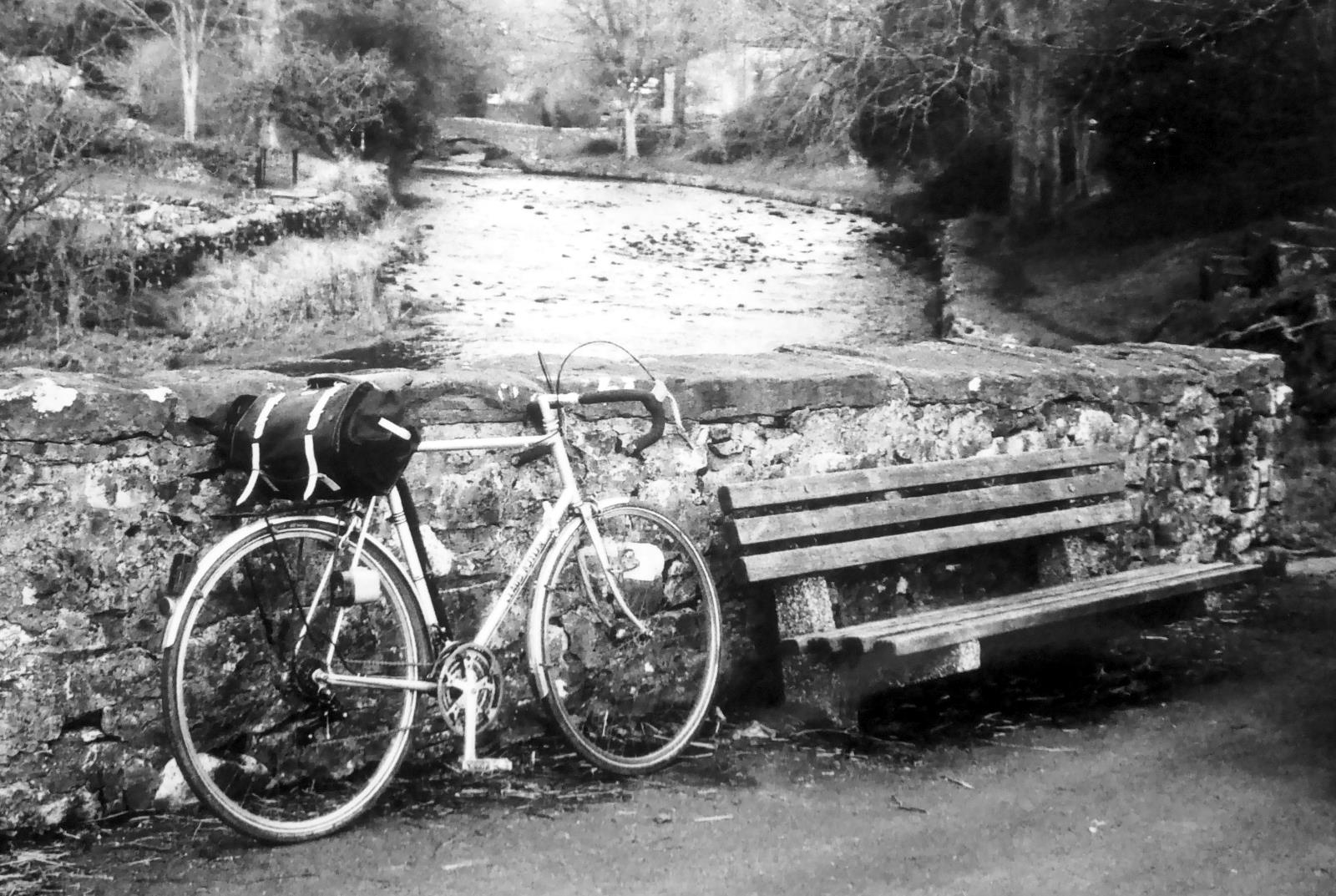
I thought I ought to start scoping somewhere to stay in Settle, and pondered making a phone call. However, Clapham’s box (still functioning despite threats of closure in 2016) posed two obstacles: it was covered in bird poo, and didn’t take cash.
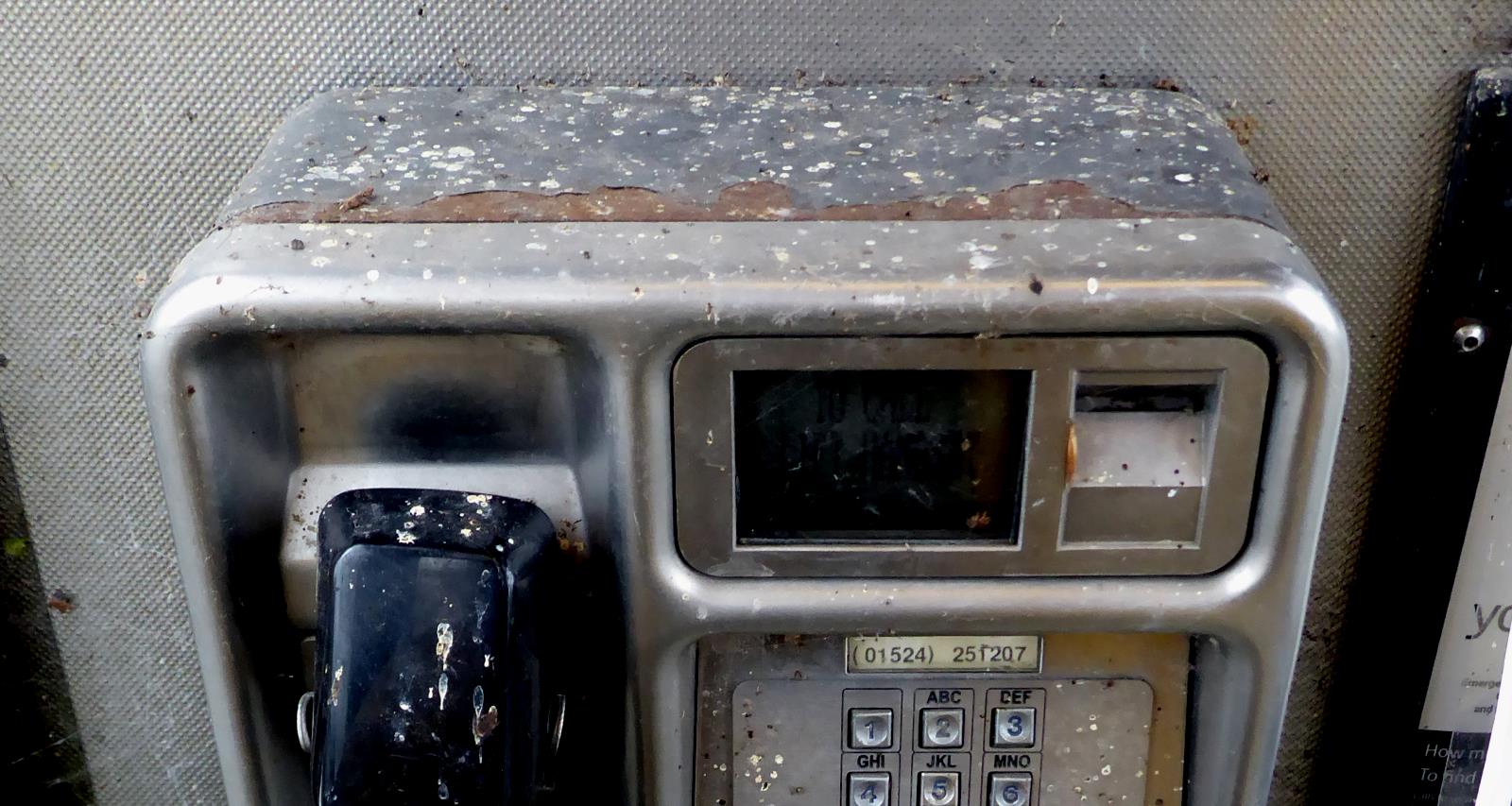
I carried on to the next village booth at Austwick, but it was card-only too, beyond my self-imposed rules. I decided to move on to Settle anyway and ask at Tourist Info.

The WoR between Austwick and Settle goes along lovely little lanes, looking up towards Pen-y-ghent, and this was a good place for some black and white SLR pictures. The old technology is still available: you can buy films and get them processed in Boots still, but it’s very expensive: £10 for a film and £20-plus for the developing and printing.
So, at £1 a print or so, I was rationing my pictures. As, indeed, I did in the 1970s: I’d only take a handful of pictures in a day, in contrast to the dozens and dozens I can take effectively for free now.
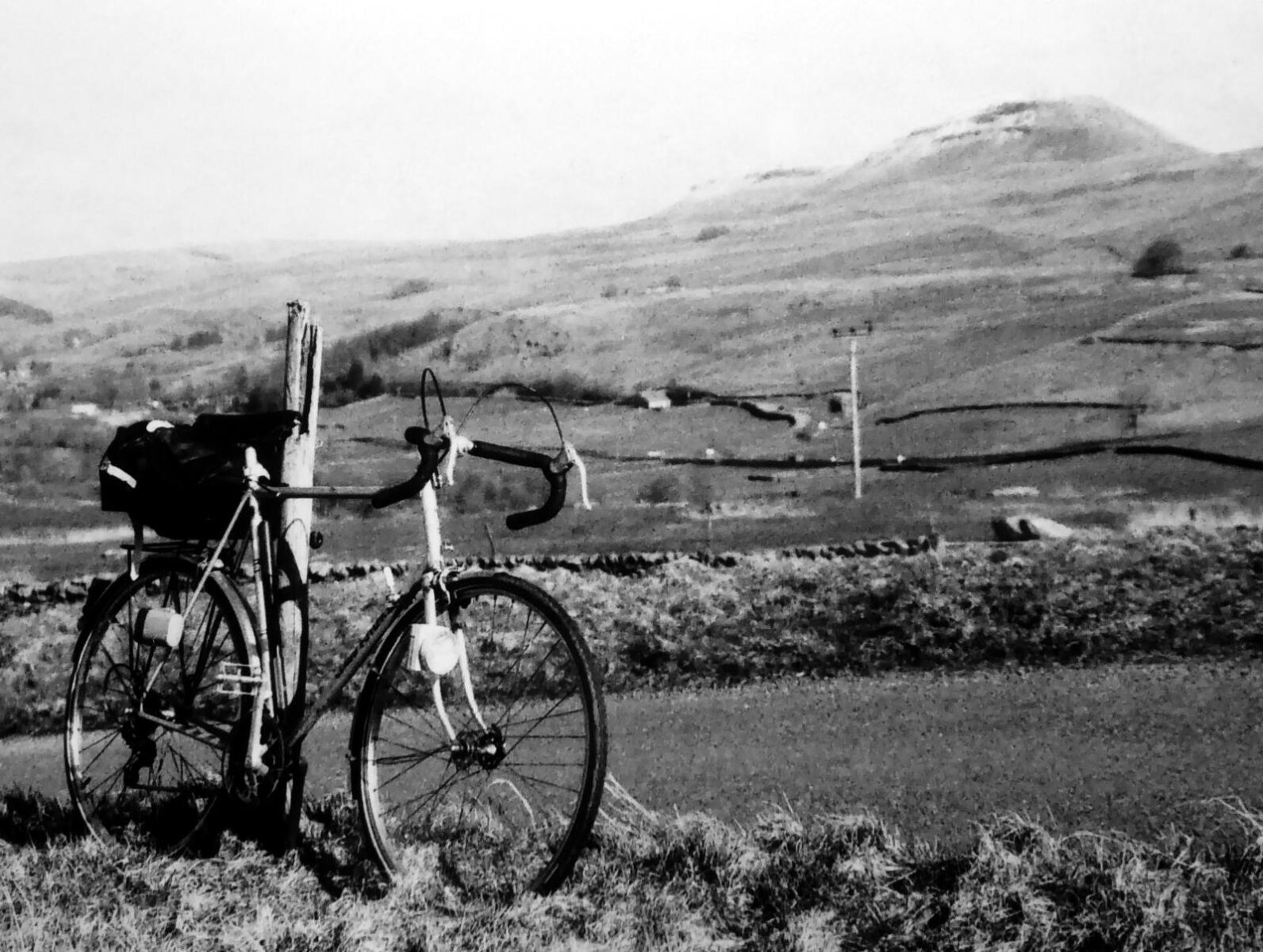
My hunt for a phone box in Settle was thwarted again – it had been converted into a sound art installation – and the Tourist Info was closed. (Faced with competition online, most in Britain have either closed down, or open only limited hours with volunteer staff.)
So I asked in the local bike shop in the square, 3PeaksCycles. They suggested a guesthouse, which indeed had a room, but at £80 was a bit beyond my budget. However, they’d also mentioned the YHA youth hostel at Malham. I knew about that anyway, having stayed there several times, so I decided to give it a punt and cycle there.
The climb out of Settle is notorious to WoRers – a long clamber up to the hilltops – and it was rainy, cold and windy. Luckily the hostel (which is only a couple of miles off the WoR route) not only had a dorm bed for me, but tonight it was only £15, thanks to some dynamic pricing algorithm working in my favour. (It would apparently have been £35 the week before.)
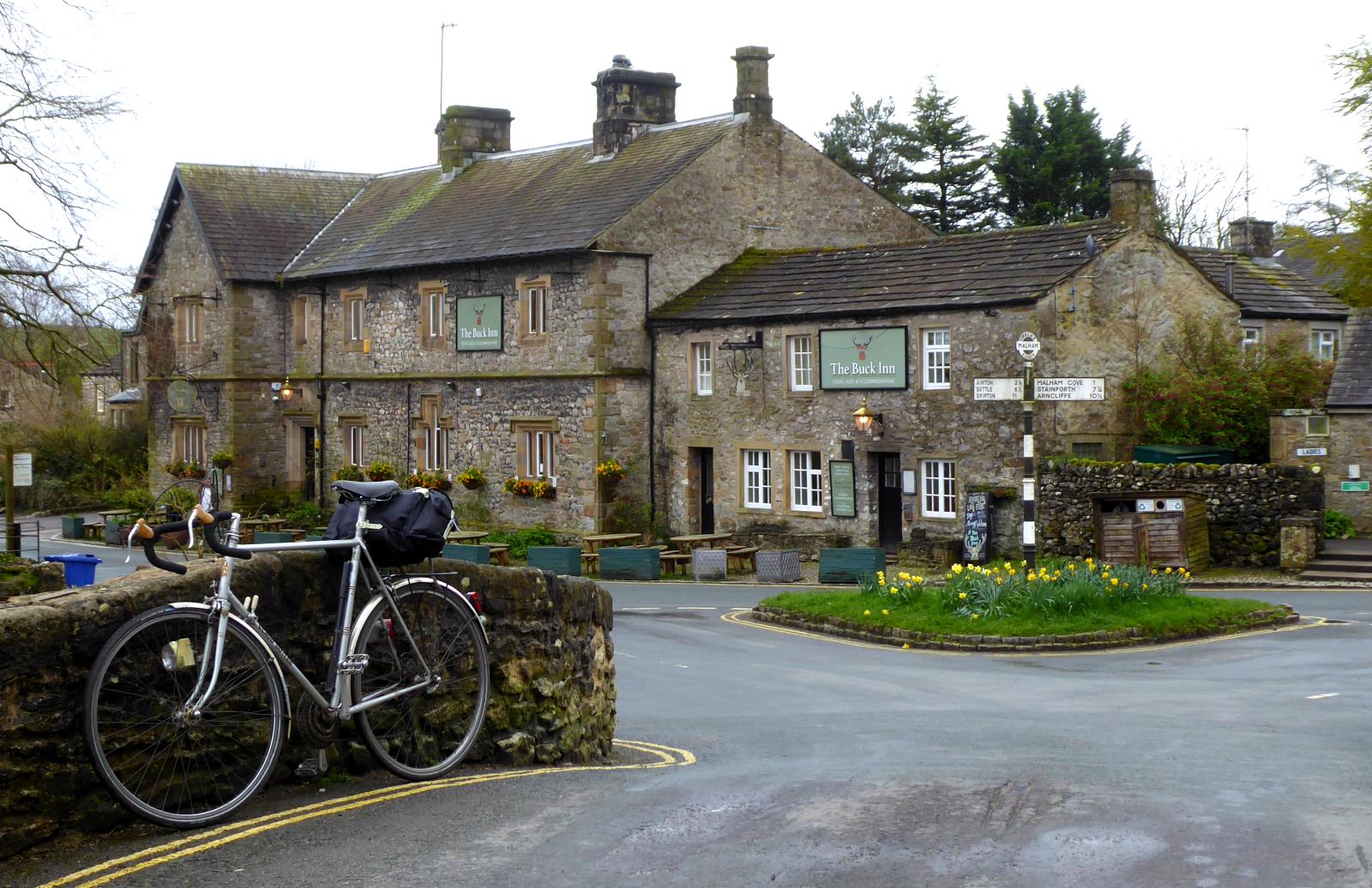
I enjoyed a sociable evening in the hostel common room, a place of lively chat where nobody was staring at a phone. It all felt like times of old, the days when hostels banned cars and booze and locked you out in the rain until 5pm and made you do chores like dust the piano. (Now of course they welcome drivers, will flog you a bottle of house red, and you can use the lounge wifi all afternoon.)
But whether the common room went full 1970s with games of cards, guitar singalongs, and people telling ghost stories as the fire died down, I don’t know, because I was knackered and was in bed by nine.
* Edit: I subsequently found the bike actually dates from January 1979. Which, appropriately, is the exact month I bought my first proper 531 steel bike: a Raleigh Clubman.
Miles today: 41
Miles since Morecambe: 41
